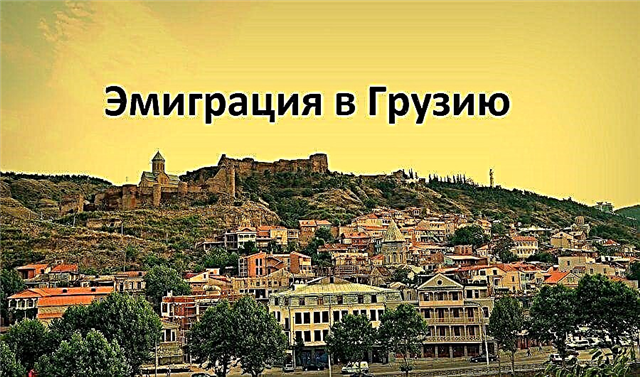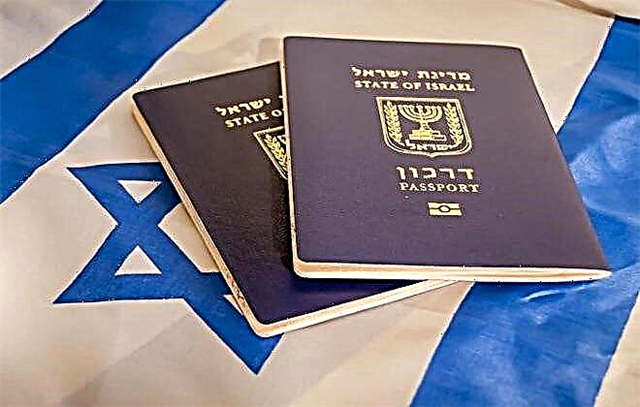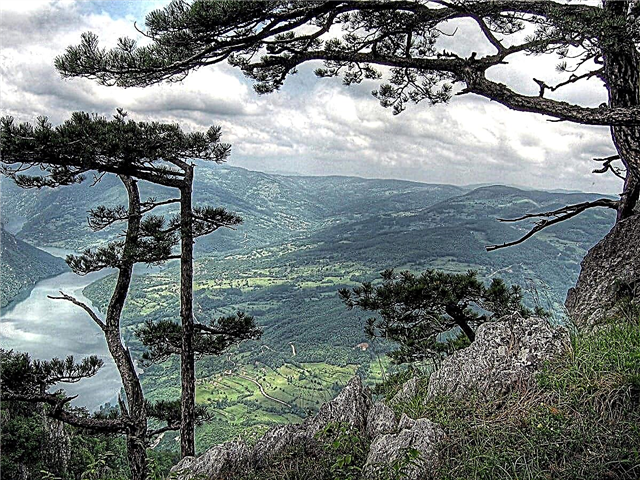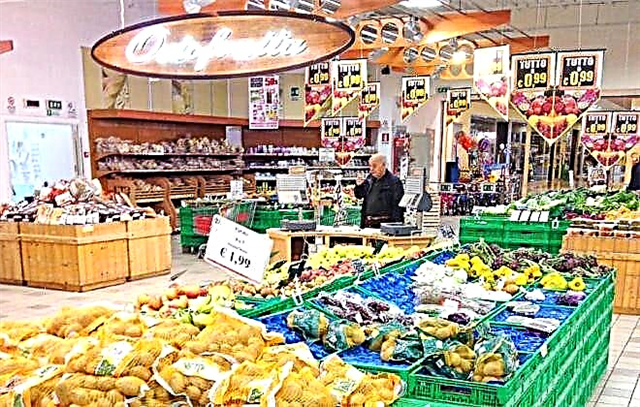Italy has been popular with Russian citizens in recent years. Every year, thousands of Russians come to Italy to relax, study, and shop in Italian outlets. For those who are planning to visit this country in 2021, it will be useful to get detailed information on what are the current prices in Italy. Possession of up-to-date information will allow you to calculate the amount necessary for the trip in advance and thereby protect yourself from unpleasant situations. In addition, understanding prices will significantly reduce the risk of being cheated in a foreign country.

The level and quality of life in Italy
Italy is a country of high living standards, and in terms of living standards it is one of the most prosperous countries in the world. According to the London analytical center Legatum Institute, according to the results of 2021, Italy took 34th place in the ranking of the most favorable countries for living.

However, there are several nuances that you should be aware of.
Firstly, Italy is inferior in terms of the level and quality of life to its closest neighbors - France, Switzerland, Austria, as well as Germany, Denmark, Spain and a number of other European states.
Secondly, the standard of living in the country differs greatly depending on the region. So, the most comfortable life in Italy is in the northern regions. The infrastructure is more developed here, real wages are higher (by 15-25% in comparison with the center and the south).
Among the negative factors, it is worth mentioning the massive influx of refugees from the hot spots of Africa and the Middle East and the rather high unemployment rate in 2021 - 10.5% (in 2021, the third largest in the EU). This was reflected in a decrease in the amount of social benefits for unemployment: maximum - 1,338.8 euros.
How much should be taken for the trip
The amount of money required for a trip to Italy is determined individually and depends on:
- the purpose of the visit. It can be a tour of famous places, a family vacation at the sea, medical treatment, a shopping trip;
- the duration of the visit;
- the number of travelers;
- the degree of financial capacity;
- personal preference.
However, it is not necessary to take only cash with you on vacation. There is no shortage of ATMs in Italy, and a bank card guarantees a greater safety of funds.
When calculating how much money to take with you to Italy, one more circumstance should be taken into account. Each EU state independently sets the minimum amount per person to ensure his stay in the country. The Italian Ministry of the Interior has developed a rather complicated counting scheme:
| Time spent in the country | Minimum amount per person (EUR) | Minimum amount per person in a group of 2 or more (euros) | ||
|---|---|---|---|---|
| Fixed amount | Daily provision | Fixed amount | Daily provision | |
| 1-5 days | 269.6 | - | 270 | - |
| 6-10 days | - | 44.93 | - | 26.33 |
| 11-20 days | 51.64 | 42 | 25.82 | 22.21 |
| more than 20 days | 206.58 | 39 | 118.79 | 17.04 |
The EU Border Code prescribes an audit of the financial security of tourists. This can be cash, bank cards, bank guarantees and other evidence of income. Although, according to travelers' reviews, such checks are carried out selectively.
First expense item: food
One of the brightest impressions from Italy is getting to know the local cuisine. However, it should be remembered that prices here "bite". Therefore, having tasted the local cuisine, most budget tourists tend to save on food.
This can be done in two ways: start cooking yourself or eat where there are fewer tourists and more Italians in family-style pizzerias. For those who live in rented apartments, the best way to save money and time is to cook yourself.
Compared to last year, food prices increased slightly - from 0.2 to 2.1%.
Average food prices in Italy in 2021, euros:
| The product's name | Price (EUR) |
|---|---|
| Everyday | |
| Milk (1 l) | 0,8—1,5 |
| Butter (1 kg) | 30 |
| Chicken eggs (12 pcs.) | 2.3 |
| Paste (500 g) | 2—3 |
| Rice (1 kg) | 1—2 |
| Ground coffee (500 g) | 3—6 |
| Fresh bread (500 g) | 1—2,25 |
| Olive oil (1 l) | 4—5 |
| Sunflower oil (1 l) | 1,1—2 |
| Sugar (1 kg) | 1.3 |
| Cheese and chilled meat (kg) | |
| Soft cheeses | 8—11 |
| Hard cheeses (parmesan, etc.) | 12—15 |
| Bacon | 10—20 |
| Ham | 10—15 |
| Pork | 5—9 |
| Beef | 13—18 |
| Chicken (whole) | 4 |
| Chicken fillet | 8—11 |
| Jamon | 20—30 |
| Sausage Milano | 10—15 |
| Salami | 20—30 |
| Seafood (kg) | |
| Salmon | 16—20 |
| Tuna | 30—40 |
| Shrimps | 12—22 |
| Octopus | 13—15 |
| Squid | 10—12 |
| Vegetables and fruits (kg) | |
| Strawberry | 6—7 |
| Apples | 0,7—1,6 |
| Pears | 1—2 |
| Oranges | 1,5—2 |
| Potato | 1—1,2 |
| Tomatoes | 1,3—1,5 |
| Sweet pepper | 2,5—3 |
| Carrot | 1.2 |
| Cauliflower, white cabbage | 1—1,5 |
| Bananas | 1—2 |
| Cucumbers, zucchini, eggplant | 1—2 |
| Onion | 1.2 |
| Alcohol, drinks, cigarettes | |
| Still water (1.5 l) | 0,2—0,7 |
| A sparkling wine | 3,5—7 |
| Wine (0.75 l) | 2,5—6 |
| Vodka, grappa (0.5 l) | 7—10 |
| Rum (0.5 l) | 10 |
| Coca-Cola (1.5 L) | 1.4 |
| Italian beer (0.5 l) | 0,5—1,19 |
| Imported beer (0.33 l) | 1—1,8 |
| Marlboro cigarettes | 5.2 |
Where to buy food: chain supermarkets, shops, markets
 Food prices are quite affordable for Russians and are approximately the same throughout the country. The quality of the products is the highest.
Food prices are quite affordable for Russians and are approximately the same throughout the country. The quality of the products is the highest.
The entire territory of Italy is covered with a network of international and national supermarkets and hypermarkets. Most of them have their own sites, which contain up-to-date information about promotions and discounts.
The most popular supermarkets in Italy:
- Coop - in the north and center of Italy.
- Esselunga is Coop's main competitor. The assortment includes many local products (dairy, meat, fruits and vegetables).
- Lidl - has its own markets in 19 regions of the country.
- Auchan and Carrefour - French chain stores cover all regions of Italy.
- Famila - covers 14 regions. Differs in an extensive assortment and low prices. Minus - long queues at the checkout.
In almost every region of the country you can find supermarkets Billa, MD, Basko, Bennet, Eurospin, Emme Piu and others.
Hypermarkets in Italy Conad are distinguished by a variety of assortments and high quality, reflecting regional specifics. Minus - prices are 20-25% higher than in other supermarkets.
Small grocery stores maintain higher prices than supermarkets. Prices in local markets and morning exit fairs, not designed for foreign tourists, are quite budgetary and in many cases more attractive than in supermarkets.
Local farmers bring fresh meats, cheeses, fruits and vegetables, and wine from distilleries in trucks at prices that can be half the price of store-bought ones.
Prices in cafes and restaurants
At first glance, it is difficult to find inexpensive set meals in Italy, as in the Czech Republic or Spain. For lunch in a restaurant with a signboard Menu Turistico or in a home inn or tavern (trattoria) you will have to pay 15 to 20 euros plus a tip of 2-4 euros per person.
Experienced tourists recommend that those Russians, for whom culinary delights are not in the first place, but the desire to eat quickly and inexpensively, are recommended to find:
- rosticeria is a classic example of fast catering. Older people can remember Soviet canteens: move with a tray along the counter, choose food and pay at the checkout. For meat lovers, chicken is always guaranteed here. In rosticeria, you can have a hearty lunch for only 5-7 euros;
- pasticceria - cafe-confectionery. Italians start their day with breakfast for 3-4 euros - cups of coffee and homemade cakes. Pastures are closed on Mondays;
- panificio - fresh pastries and bread (also open on Mondays);
- gastronomy (gastronomia) - grocery stores where you can buy ready-made salads and marinades;
- prosciutteria - a paradise for lovers of prosciutto and meat sandwiches (from 4 euros) with inexpensive wine.
Such establishments can be found off the tourist routes, and their main visitors are Italians themselves. The average bill in a cafe for local residents is 10-12 euros, in a restaurant for tourists - 20-27 euros. Venice is equally expensive everywhere, and a business lunch here costs like a good dinner in Palermo.
Street food lovers won't go hungry either.In addition to the combo set with big macs for 6.75 euros, you can find something to your liking in each region: pizzas (from 3 to 10 euros), lamb arosticini in Abruzzo, focaccia in Genoa, dumplings fried in lard in Modena, food truck with boiled pork in Lazio, deep-fried fish in Puglia, fried guts in Palermo, panini, sandwiches.
Dinner for two in a restaurant with meat or fish dishes and a bottle of wine will cost 45-50 euros. Prices in restaurants "for tourists" will be 30-40% higher.
In most cases, restaurants place menus in front of the entrance, and everyone can assess their options in advance in order to avoid an unpleasant situation.
How much does it cost to live in Italy
Most of the expenses of Russian tourists in Italy are related to accommodation. The cost depends on many factors: region or city, season, degree of comfort.
Tourists from the Russian Federation live in Italy in:
- Hotels. Some Russians prefer to use the services of hotels in the old fashioned way. Apart from youth hostels and campgrounds with a minimum of comfort, in which a night costs from 10 to 50 euros, hotel accommodation in Italy is expensive. So, one night in a double room in Milan will cost from 80 to 120 euros in a three-star hotel during the low season, from 100 to 150 euros in a four-star hotel and from 200 euros and more in a five-star hotel. In high season, prices double or more.
- Removable housing. Every year more and more Russians, especially those who come to rest with their families or large companies, prefer to live in rented housing, which turns out to be much more profitable than staying in hotels. So, renting a two-room apartment for a week in the center of Milan will cost from 300 to 500 euros. Rental housing in southern Italy is even more profitable.
- Own housing. Despite the fact that it is difficult to find inexpensive real estate in Italy, many Russians buy their own homes here. So, in Rome, a 4-room apartment (up to 120 sq. M.) Can be bought for a price ranging from 220 thousand to 500 thousand euros. In southern Italy, such as Sicily, property prices are more affordable. However, you should also keep in mind the high utility costs. About 150 euros have to be paid for water, electricity, gas, garbage disposal. In winter, you have to pay another 180-200 euros for heating monthly. Mobile communication fee - from 0.2 euros per minute.
Fare
Travel costs also eat up a large chunk of the budget. One of the advantages of Italy is a well-developed transport infrastructure. Here you can easily get to any given point by public transport:
- Urban transport. These are buses, metro (in Rome, Milan, Naples and some other cities), trams, trolleybuses, vaporetto river trams in Venice. The fare in different regions of Italy is approximately the same. A single trip (75, 100 minutes depending on the city) costs 1.5 euros and one ticket can be used in different types of transport, except for the metro. Bus tickets can be bought at the box office, Tabak kiosks, ATAF cafe, from the driver (only after 21.00 and 1.5 times more expensive). It is profitable for tourists to buy travel passes: a BIG daily ticket for 7 euros, a single BTI tourist ticket - 18 euros for 3 days, a CIS week pass for 24 euros). The time is counted by electronics from the moment of composting. Single tickets for the Rome metro (www.romametropolitane.it) cost 1 euro for 75 minutes, 4 euro for a day, 12 euro for 3 days.
- Intercity transport. The most popular among Italians are high-speed and regional trains. So, by train you can get from Turin to Florence for 29 euros, from Venice to Verona for 9 euros. In second place are buses that connect all regions of the country. The fare is from 12 to 35 euros. You can get to Sardinia by ferry (tickets from 40 euros).
- Car rent. Many Russians prefer to vacation in Italy, constantly moving from place to place. The costs will need to include the cost of renting a car (from 22 euros per day) and fuel, toll on toll highways, for parking (from 0.5 to 2 euros per hour). It should be noted that the cost of gasoline in Italy is high: a liter of 95 gasoline costs 1.6 euros, diesel fuel - 1.55, gas (LPG) - 0.70 euros.
Education expenses
 Education in Italy can be obtained both in public and private universities. Applicants must have at least a basic level of Italian. Education in public universities is free, but an annual fee of 600 to 3 thousand euros is required. The amount of the contribution depends on the financial situation of the student. Students are provided with hostels: 100-400 euros per month.
Education in Italy can be obtained both in public and private universities. Applicants must have at least a basic level of Italian. Education in public universities is free, but an annual fee of 600 to 3 thousand euros is required. The amount of the contribution depends on the financial situation of the student. Students are provided with hostels: 100-400 euros per month.
For study in private universities, you need to pay from 6 thousand to 20 thousand euros per year, depending on the chosen specialty. Students have the right to apply for university scholarships (from 1,000 to 10,000 euros), enjoy discounts on public transport, visits to museums, etc.
In addition, students have the right to earn extra money, but no more than 20 hours a week. There are special grants for students who are citizens of the Russian Federation in Italy.
Medical and drug costs
The Italian National Health System (NHA) is one of the most efficient in the world. Citizens of the country enjoy the right to free treatment, they are compensated for the cost of purchased medicines.
Any foreigner staying in the country can apply for emergency medical care in Italy. Medical insurance for tourists with coverage of 30 thousand euros ensures all possible costs associated with treatment or hospitalization. In the absence of insurance, you will have to pay in full the cost of treatment and medicines.
In large cities there are several points of free treatment of tourists. For example, in Rome - the Fаtebenefratelli hospital on the island of Tiberina.
The prices for medicines in all Italian pharmacies are the same. Quality control is strict and there is no fear of counterfeiting. In most cases, prices are lower in comparison with Russian ones.
But getting sick abroad is expensive: prescribing a prescription - 50 euros, ultrasound - from 80 to 200 euros, a therapist's services - 100 euros, a narrow specialist - 150 euros.
Shopping in Italy is one of the most important incentives for millions of tourists. Italy has a huge number of outlets, stock stores. Local products are cheaper: quality jeans - 70 euros, a dress or men's shirt - 35 euros, summer shoes - 90 euros. Clothes of famous brands are 25-30% more expensive.
But most tourists come here for sales. During the winter and summer sales - Sconti - prices for items from past collections of world famous brands fall. The markdown can reach 20-70% or more.
From 2021, the Italian government has established uniform sales schedules (Saldi). The duration of the sale is 60 days. The schedule is designed so that potential buyers have time to visit all the outlets.
In 2021, the winter sales ended on March 31st.
Summer sale of clothes will start from July 2 in Trieste, Potenza, Bari, from July 6 - in Naples, Rome, Genoa, Venice, Rimini; will last until early September.
The most favorable areas for shopping are Rome, Milan, Bari. In addition to branded clothing and footwear, tourists are attracted by ethnic products, jewelry, Murano glass and other souvenirs.
Leisure and sightseeing expenses
 A summer tour to Italy is, first of all, a vacation on the coasts of five seas, excursions, visits to museums and galleries. With a seaside vacation, everything is simple: there are urban paid beaches (6-22 euros per day) and free - both wild and equipped with sun loungers, umbrellas (15-20 euros for two sun loungers and one umbrella).
A summer tour to Italy is, first of all, a vacation on the coasts of five seas, excursions, visits to museums and galleries. With a seaside vacation, everything is simple: there are urban paid beaches (6-22 euros per day) and free - both wild and equipped with sun loungers, umbrellas (15-20 euros for two sun loungers and one umbrella).
On municipal beaches, the 5 m wide coastal strip is free for everyone. A vacationer can go to the paid beach for free and swim in the sea, provided that he does not use any services, including sitting on the sand.
In each tourist center, you can choose an excursion at a suitable price:
- For example, bus tours in Rome - 28 euros, from Rome to Pompeii - 20 euros.
- Walking tour of the Vatican Museums and the Sistine Chapel - 30 euros.
- Visiting the Colosseum - 12 euros (17 - with an audio guide), St. Paul's Cathedral - 15 euros.
- A visit to Milan Cathedral or the Duomo Museum will cost 2 euros.
- At the Borghese gallery - 25 euros, the Uffizi - 24 euros (4 - for children).
- The Doge's Palace can be visited for 20 euros.
For tourists in Rome, there is an opportunity to save money by purchasing a tourist card Roma Pass for 74 hours for 38.5 euros or for 48 hours for 28 euros. This card allows you to visit the first two museums for free, use public transport, and give discounts on visits to other museums.
Where life is more expensive in Italy
The situation with prices in various regions of Italy reflects the prevailing arrangement: the rich North and the poor South. Prices for groceries and things in small shops and markets, utility bills in northern Italian cities are higher than those in the south. Although the cost of food in supermarket chains is approximately the same in all regions of Italy.
If the living wage in Italy is 1,500 euros for a family of two with an average salary of 2,415 euros, then these figures in southern Italy are less by 100-200 euros.
For tourists looking for more economical options, the best option would be a vacation in the south of Italy: cheaper accommodation and food, free roads from Naples to the south.
Instead of a conclusion
When deciding for themselves whether it is expensive to vacation in Italy, Russian tourists need to calculate the possible costs. On a tight budget, a family of three will be able to take a seaside vacation, renting an apartment on the south coast at the start of the season, before prices are still peaking, and do some shopping at outlets during sales.
In general, we can say that holidays in Italy are quite expensive. If the goal is simply to get a sea tan, then more budget options can be found. But if you want not only to visit the sea, but also to see the sights, to get vivid impressions of a country with an ancient culture, then such a trip is worth the money.











